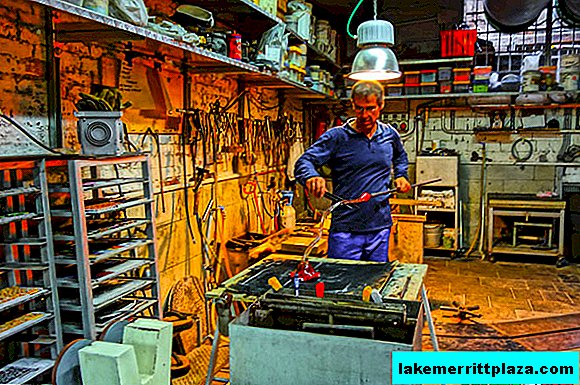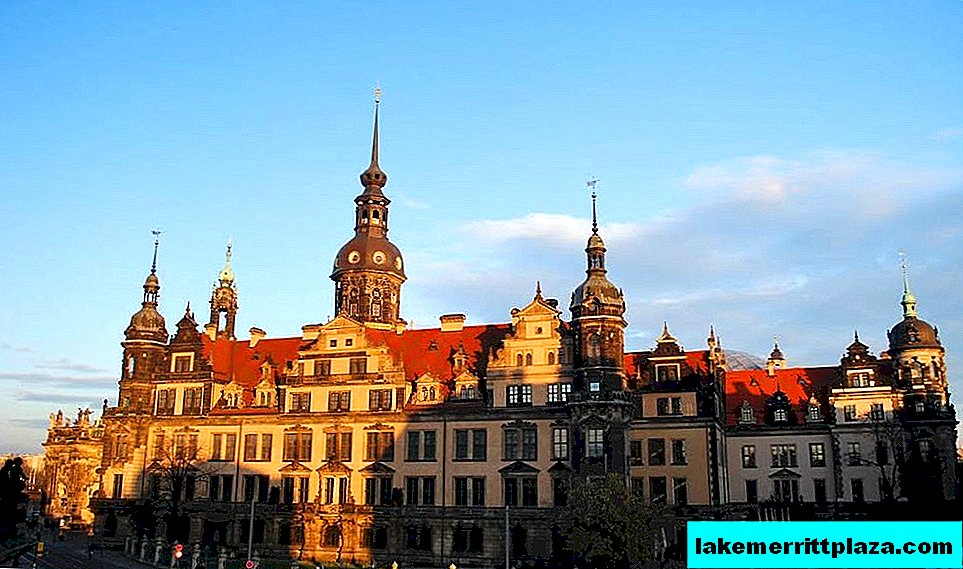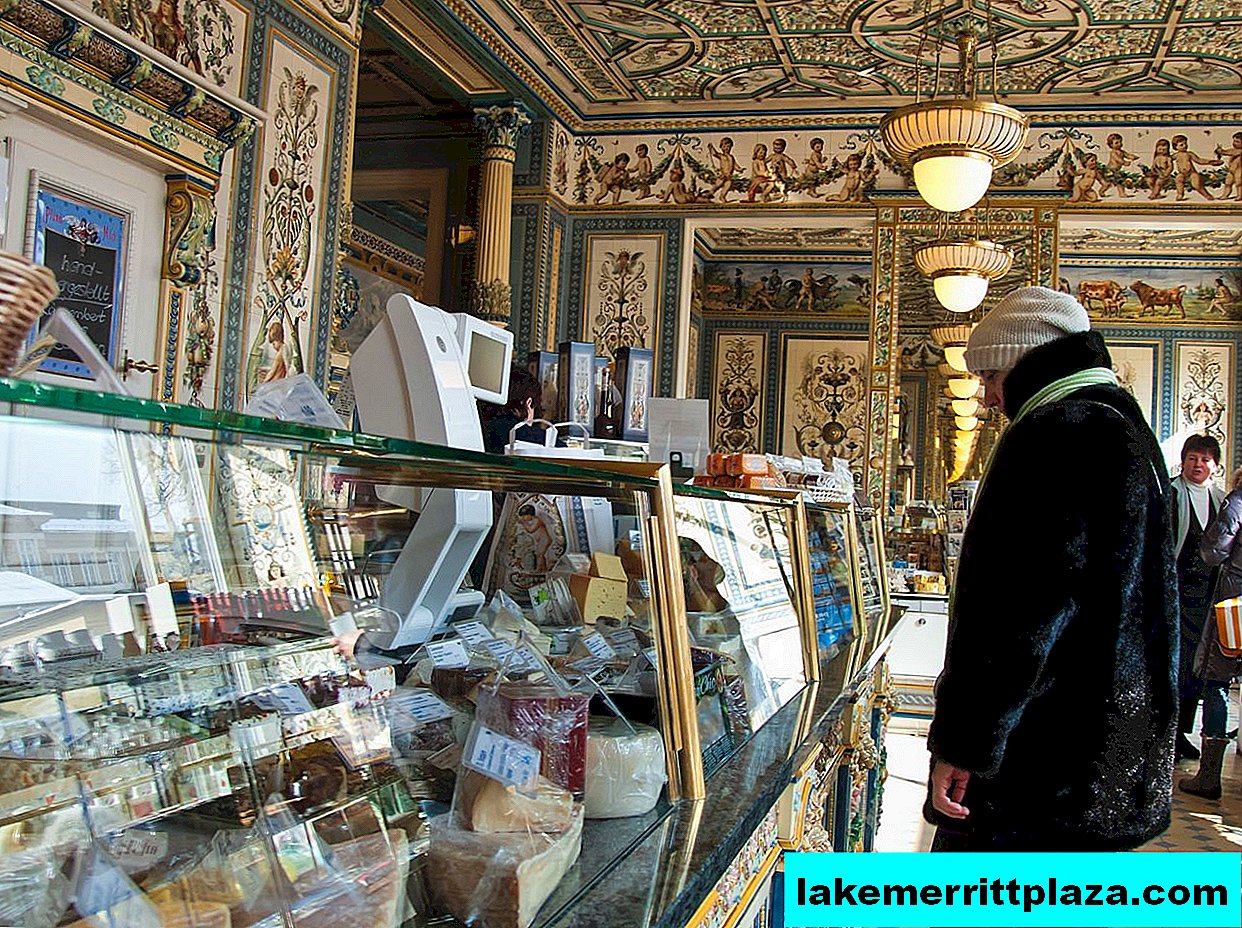For many decades, one of the islands of the Venetian lagoon, the island of Murano, is famous for its unique glass art. Making stunning beauty of blown glass products, which are subsequently carefully crafted by artisans, has glorified a small island around the world.
The secret to getting unusual figures from blown glass was kept in the strictest confidence by the authorities of Venice, and those who knew the secrets of making glass did not have the right to leave the city. The masters of this amazing thing could not leave Venice, but it is worth noting that they did not live so badly. The fame of Venetian glass scattered around the world very rapidly, attracting more and more merchants to the Venetian lagoon every year. And if earlier all the workshops for the manufacture of blown glass figures were in Venice itself, then soon the city authorities in connection with the growth of production decided to move it outside the city limits, to the island of Murano, thanks to which glass was named Murano.
- Recommended: You can learn all the secrets of Murano glass on an individual excursion to the islands of Murano and Burano

Since the 15th century, Murano glass products were considered a luxury item, they were often presented to high-ranking officials who came to Venice. And there was no such person who would not admire the ability of Murano masters to create real works of art from blown glass.

The peak of its heyday and popularity was achieved by the amazing technology in the 16th century, when craftsmen literally excelled themselves, and the glory of Murano masterpieces boomed throughout the world.
Products were amazing with their lightness and apparent weightlessness, they were often written about in books and even depicted on canvases.

In 1797, the island of Murano survived the attack of the French troops, which until 1806 occupied it, destroying all the factories and workshops for the manufacture of unique glass figures. It would seem that the history of Murano glass came to an end, however, in the mid-19th century, a lawyer from Vicenza, Antonio Salviati, with the support of two enterprising Englishmen, built a factory on Murano and resumed production of colorful blown glass products. The former glory, as well as the high quality of the work of the masters of our time, have provided the products with the same demand and popularity that have not died down to this day.
Today, the unique and sophisticated craft of Murano glassblowers is widely used in subject design. And this is not surprising. The unlimited and endless color, technological and textural possibilities of glass allow the author to realize any idea. Murano glass harmoniously looks in almost any interior, whether it is part of traditional tableware or a bold design creation.
Today, on the small island of Murano, hereditary masters of this craft, as well as students of current craftsmen, are successfully working. Often, talented designers who often cannot miss the opportunity to collaborate with Murano glassblowers often visit this part of the Venetian lagoon. Like many centuries ago, Murano glass continues to delight its connoisseurs, changing many-sidedly and taking any form.
How to get there
You can get to the Murano island by vaporetto (route boat) No. 41, 42, 51 and 52, boarding this mode of transport at S.Zaccaria station (near St. Mark's Square) or at the train station. The trip takes 30 minutes. From S.Zaccaria Murano Station, you can also take the LN route. From Fundamento Nuove Station, you can reach destination by Route 13.
Sights
Of course, numerousshops, where masterpieces of Murano glassblowers are sold. They are located right along the main channel of the island. Here you can find anything you want, from exquisite glasses (from 15 euros) to unusual figures and Murano glass jewelry.
Museum of Glass
Museum of Glass (Museo di Vetro), within the walls of which all the traditions of Murano glass have been preserved, and various exhibits of glass have been collected, dating back to the times of Egyptian times. You can get to the museum building on foot from Murano Faro Station, where all the vaporetto from Venice arrive.
- Museum Address: Fondamenta Marco Giustinian, 8, 30141 Venezia, Italy.
- Work mode: Summer: Mon-Tue, Thu-Sun 10.00-17.00, winter Mon-Tue, Thu-Sun 10.00-16.00.
- Admission Ticket Price: 4 euro.
Santi Maria e Donato Church
Church of Santi Maria e Donato - one of the oldest in the entire Venice lagoon, it dates from the 12th century. Inside the building, to this day, tourists can plunge into the atmosphere of ancient Byzantium: a mosaic located on the walls and ceilings contributes to this as well as possible. It is located on the main square of the island, which can easily be reached from the vaporetto stop (about 400 meters).
- Church Address: Campo San Donato, 11, 30141 Venezia, Italy
Hotels on Murano Island
Since the island is not big at all, a significant part of tourists comes here from Venice for just a few hours. Nevertheless, on Murano there are 7 hotels in one of which you can stay, for example, with your loved one on a romantic trip to Italy. The cost of living from 75 to 160 euros per day. In our opinion, it is worth paying attention to the only 4-star hotel on the island La Gare Hotel Venezia - MGallery Collection. The average price for a room in a season is about 200 euros, but often booking it for several months you can easily book a room for 100-120 euros, which is an excellent offer for a hotel of this level.








